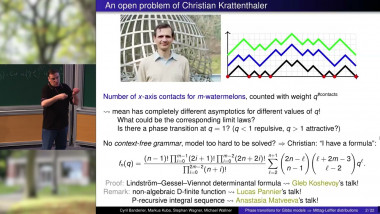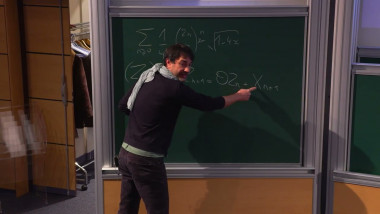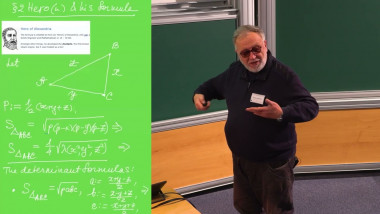Appears in collection : Jean-Morlet Chair: Qualitative methods in KPZ universality / Chaire Jean Morlet : Méthodes qualitatives dans la classe d'universalité KPZ
Complete wetting in the context of the low temperature two-dimensional Ising model is characterized by creation of a mesoscopic size layer of the "-" phase above an active substrate. Adding a small positive magnetic field h makes "-"-phase unstable, and the layer becomes only microscopically thick. Critical prewetting corresponds to a continuous divergence of this layer as h tends to zero. There is a conjectured 1/3 (diffusive) scaling leading to Ferrari-Spohn diffusions. Rigorous results were established for polymer models of random and self-avoiding walks under vanishing area tilts.
A similar 1/3-scaling is conjectured to hold for top level lines of low temperature SOS-type interfaces in three dimensions. In the latter case, the effective local structure is that of ordered walks, again under area tilts. The conjectured scaling limits (rigorously established in the random walk context) are ordered diffusions driven by Airy Slatter determinants.
Based on joint walks with Senya Shlosman, Yvan Velenik and Vitali Wachtel.
















